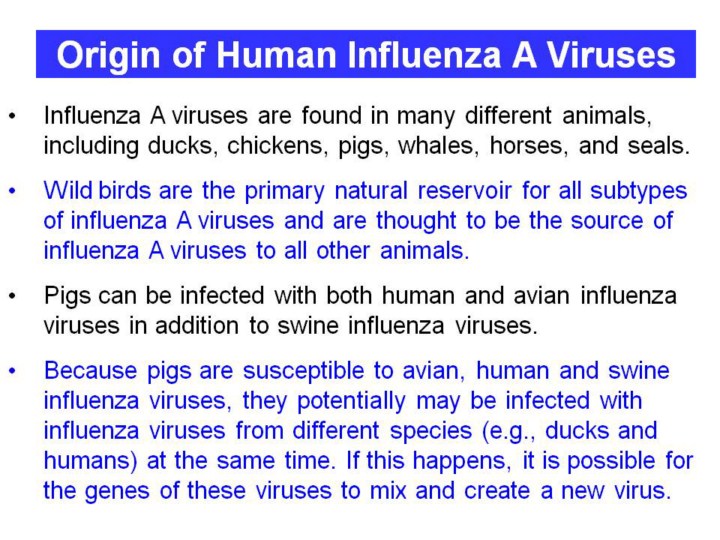| front |1 |2 |3 |4 |5 |6 |7 |8 |9 |10 |11 |12 |13 |14 |15 |16 |17 |18 |19 |20 |21 |22 |23 |24 |25 |26 |review |
 |
Virtually all human infectious disease agents were or are disease agents of animals - i.e., zoonotic in origin. Over time, most have adapted to humans and have become “speciated” and can no longer easily infect other species. Most “new” or “emerging” human infectious disease agents are zoonotic in origin and human infection due to animal agents such as influenza viruses occur constantly. New influenza viruses that can spread easily in human populations can emerge suddenly without any fixed pattern. However, all influenza viruses are different with regards to their: (a) ability to spread in human populations; (b) clinical spectrum of disease; and (c) mortality rate (MR).
|